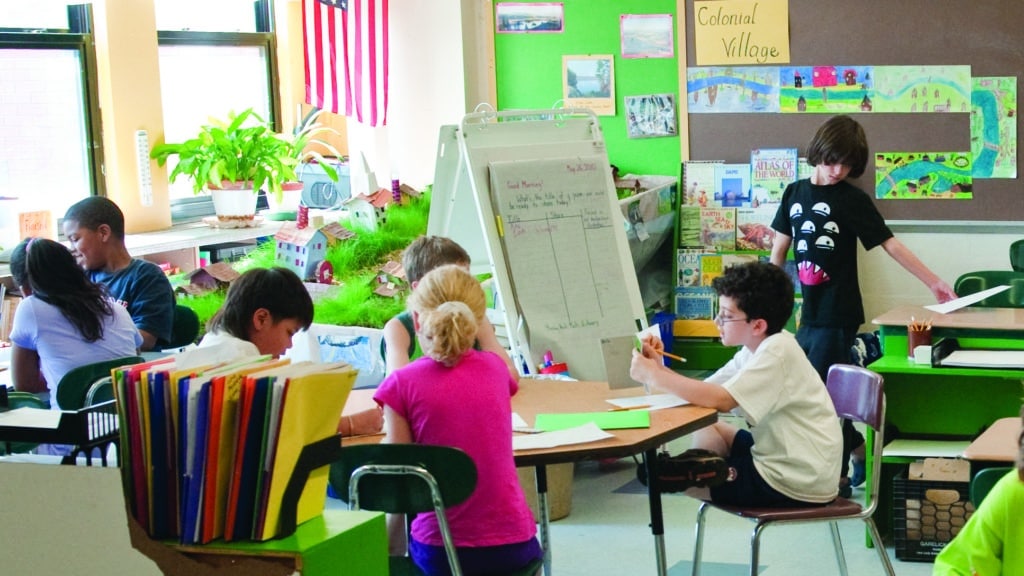
Bullying behaviors go on under our radar. Children report far higher levels of bullying in their classrooms than their teachers do. They see it when we don’t. It happens while we’re helping a student, glancing at plans for the next lesson, or answering a call from the office. We turn our backs or walk across the room, and that’s when the pokes, mean words, or exclusion take place. I wrote earlier about partnering with parents to stop bullying in school. We also need to enlist students in order to make school safe for everyone.
Recently I visited an elementary school in Maine that is taking an innovative and effective approach to building student investment in keeping their school safe, friendly, and inclusive. Walking down the hall, my attention was caught by a student-created bulletin board about how to include peers who are being left out. Photographs of students were embellished with thought bubbles with comments such as “Hmmm, I could ask him to play,” and “I wonder if she likes to jump rope?”
I was intrigued. I often see commercial posters in school hallways emblazoned with anti-bullying statements, and I wonder if anyone reads them. These student-created displays felt much more powerful to me, because they were created by admired older students in the school, and because they were written in the language of children. I wanted to know more.
I learned that the posters were created by the Bloomfield Elementary Civil Rights Team, which is a leadership opportunity for third and fourth grade students. Team members are recommended by teachers, and then the children apply for a place on the team by writing about changes they’d like to see in the school, with a focus on changes that would make the school safer and more friendly.
Civil Rights Team members study the laws of the state of Maine that ensure a safe environment for all students. They attend a statewide conference on school safety. They learn about the history of the civil rights movement in our country. With all of this knowledge under their belts, they go into the classrooms of younger children to read aloud stories that inspire respect and safety. They create the above-mentioned bulletin boards. They plan and implement school assemblies to teach friendliness, respect and inclusion. I’d love to be there and hear them sing “This School is Our School” at the conclusion of their next assembly!
This isn’t just happening at one school, either. More than 200 schools in Maine have Civil Rights Teams, including 11 elementary schools. (Read more about Maine’s statewide Civil Rights Team Program.) What about you? Have you tried ways to build student investment in creating a safe and friendly school? I’d love to hear about what’s been going on in your school.
Caltha Crowe is a Responsive Classroom consulting teacher with nearly forty years of experience teaching elementary school students and twenty years of experience mentoring new teachers. She is the author of three books: Sammy and His Behavior Problems, Solving Thorny Behavior Problems, and How to Bullyproof Your Classroom.
How to Bullyproof Your Classroom, offers a practical, proactive approach to bullying prevention. Learn how to create a positive classroom environment and how to respond to mean behavior before it escalates into bullying.
https://www.responsiveclassroom.org/product/how-to-bullyproof-your-classroom/
“Teacher-friendly from start to finish!” —Martha Hanley, Grafton, MA